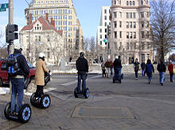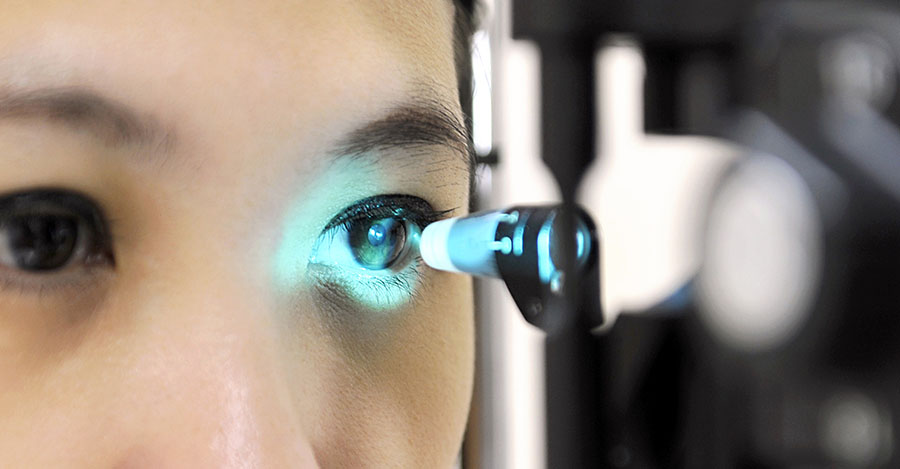
He's a father of four, but Brian Shaffer can only dream of what millions of parents take for granted.
He'd love to be able to walk his daughter down the aisle when she gets married someday. Or climb into the bleachers to watch his son play football.
Right now, doing either would be nothing short of a miracle.
On Christmas Eve 2010, Shaffer was in a horrible car crash. It left him paralyzed from the waist down.
That's why today, Shaffer is helping develop cutting-edge high tech that helps paraplegics walk again. He's part of a test program for a new powered "exoskeleton" that functions like a robotic walking suit.
The advanced device allows people with severe spinal cord injuries to sit, stand, walk, and even climb stairs on their own. Designed for ease-of-use, the relatively light and compact system is worn over a patient's clothes. It provides a whole new level of movement, far and away better than what's currently on the market.
"My kids have started calling me "Ironman,'" Shaffer says - a reference to the movie by that name starring Robert Downey, Jr. as a scientist who wears a powered suit of armor that, among other things, allows him to fly.
"It's unbelievable to stand up again," Shaffer adds. "It takes concentration to use at first, but once you catch on, it not that hard. The device does all the work."
This walking suit is the brainchild of Vanderbilt University in Nashville. Of course, the school isn't doing this on its own. Vanderbilt has licensed this product to a big company that has the money and the marketing muscle to make it a commercial success. And talk about a perfect fit: Parker Hannifin Corp. (NYSE:PH) is a sprawling maker of motion and control systems.
The team believes their invention could be on the market as early as 2014.
This is a great example of how the latest high-tech breakthroughs can go from the lab to the market.
Many of the best tech advances do come out of colleges. Even though we focus on the investment angle to all these stories, I often tell you about seemingly "academic" advances, because I know that many such schools actively court licensing deals with companies. Either that, or the researchers go out on their own and start new firms.
These are just two of the ways in which we can invest in fascinating new technology.
The details on this device are just fantastic...
The Vanderbilt team says their system features improvements in robotics, microelectronics, and motors that allow the suit to work like an external skeleton. Motors controlled by a computer drive the hip and knee joints. To maintain their balance, patients use walkers or forearm crutches.
"You can think of our exoskeleton as a Segway with legs," says Vanderbilt Professor Michael Goldfarb. "If the person wearing it leans forward, he moves forward. If he leans back and holds that position for a few seconds, he sits down. When he is sitting down, if he leans forward and holds that position for a few seconds, then he stands up."
The system weighs just 27 pounds - about half the weight of current systems.
What's more, it's the only wearable robot with proven rehabilitative benefits. It incorporates something known as functional electrical stimulation (FES). Here's how it works. FES applies small pulses to paralyzed muscles, which in turn causes them to contract and relax. The process can improve bone density and circulation, as well as strengthen muscles.
Fact is, lack of mobility can give the wheelchair-bound serious issues with their urinary, respiratory, and digestive systems, among other problems. So the Vanderbilt device not only provides patients with newfound freedom, it also can improve their health.
In this case, I believe Parker Hannifin could have a winner on its hands. No doubt, it's looking at a big market. The U.S. alone has more than 230,000 people living with spinal cord injuries. About 155,000 of them are paraplegics. It costs well over $1 million to treat each patient over a lifetime.
It's hard to say what the market could be worth, but Thomson Reuters reported that ABI Research forecast a market of $320 million for bionic exoskeletons within 10 years.
One thing's for certain: This is a fast-moving field.
There's also Agro Medical Technologies Ltd. of Israel. It's now selling a version of its ReWalk unit for personal use in Europe. In the U.S., the ReWalk is approved for use in rehab clinics, but permission for home use is pending. And back in May, I told you about Ekso Bionics of Berkeley, Calif. The firm began with funding from a research arm of the Pentagon and now has its bionic suits working at several U.S. rehab centers.
As I see it, the fact that three firms have entered this field is a great sign of progress. It means we are reaching critical mass in our bid to restore motion to people with serious spinal injuries.
This is one of the reasons I love to write about the Era of Radical Change. It seems that every day I come across another new advance that has the potential not just to change the world but to improve people's lives on the most basic level.
I pay especially close attention to the field of spinal cord injuries for a deeply personal reason. When I was 19 or 20, I was out on my motorcycle one day when I came upon the scene of a crash involving another motorcycle. As fate would have it, I knew the crash victim. Chris and I had been friends since junior high. He survived but lost the use of his legs because of trauma to the spine. He's been confined to a wheelchair his whole adult life.
So don't be surprised if in the near future you see my friend Chris walking down the street in his own robotic suit.
Money Morning



























































